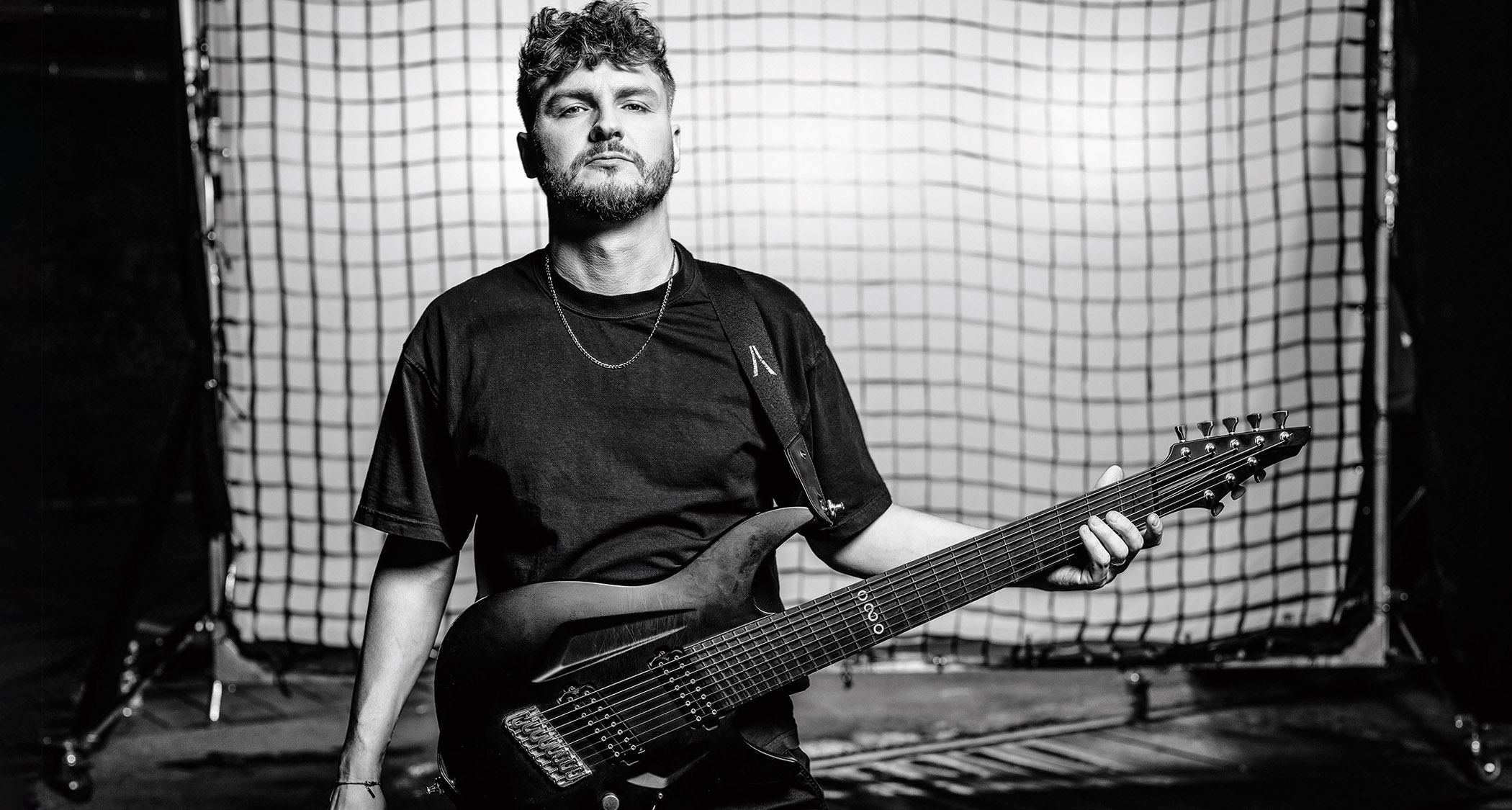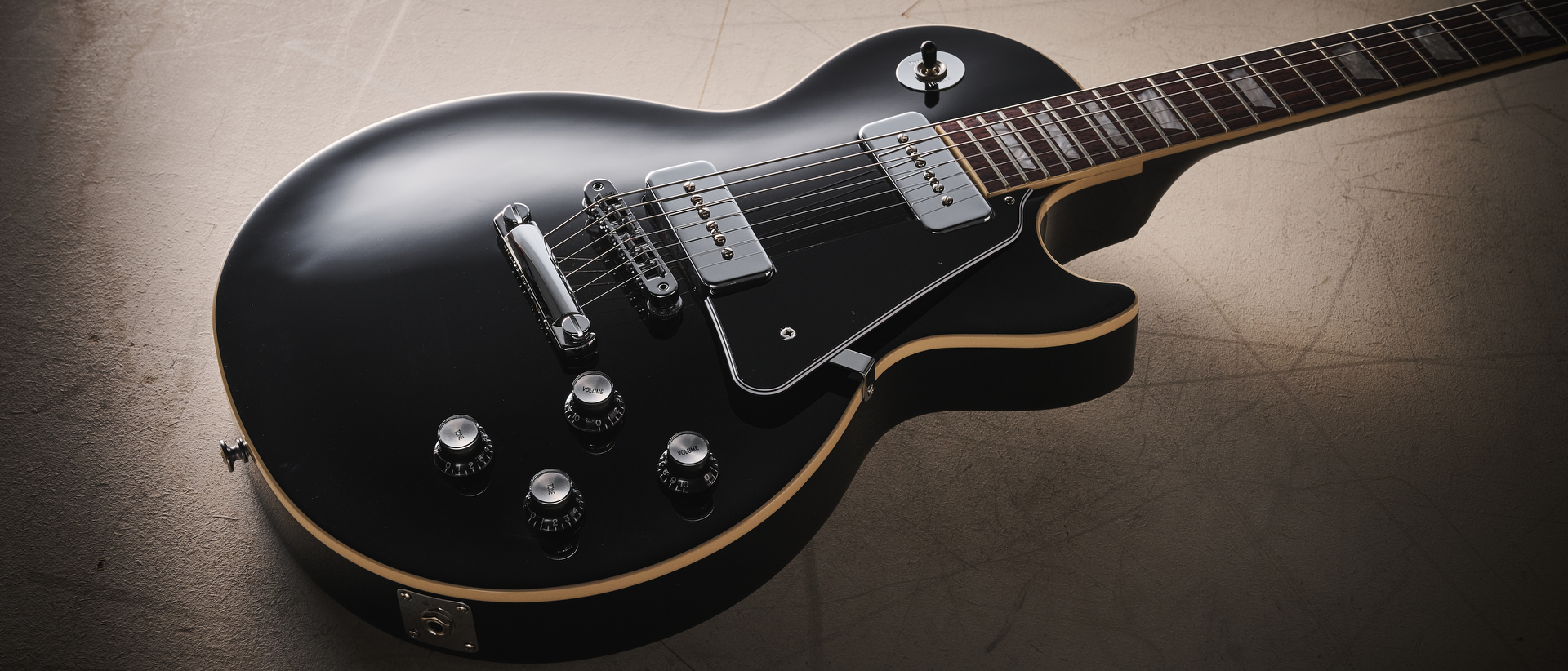“He taught me how to play songs by Dream Theater, Iron Maiden and King Diamond… though I remember giving up on some of the John Petrucci solos!” Tor Oddmund Suhrke on guitar lessons with Ihsahn and casting musical illusions with Leprous
Melodies of Atonement finds Leprous taking the complex and making it sound simple – and if that confuses prog purists then so be it, says Suhrke. There is no reversing the evolutionary wheel…

The term ‘progressive metal’ often suggests the kind of indulgent, neoclassical futurism typified by Dream Theater and Symphony X, but Norwegian quintet Leprous – arguably one of the most exciting names operating in the genre today – have chosen moods and atmospheres over sprawling overtures.
The group, formed by singer/keyboardist Einar Solberg and guitarist Tor Oddmund Suhrke in 2001, cut their teeth early on as the live band for Ihsahn, the man who famously pioneered the symphonic black metal sound through his work in Emperor. Such an opportunity during the band’s embryonic years benefitted them greatly in terms of musical development and helped sharpen their collective tools of the trade.
“We don’t sound like those technical progressive bands with all the fast leads,” Tor says. “Our music is more about emotion. We focus on mood. It’s funny, Leprous is like an overdue youth project. Myself and Einar started the band when we were 15. Most people start out in one group and then switch to other things as they develop, but we never quit our first band!”
As illustrated by their stunning eighth full-length Melodies Of Atonement, the band have come a long way indeed. And as Tor explains, these latest recordings were born out of a desire to evolve in different directions, a mission to make the complex sound simple…
Who were your biggest influences when you started this band?
“The first ones I think about tend to be my early ones, when I picked up the guitar. That’s when you really focus on your inspirations and heroes. After that, you start to develop your own sound through a whole bunch of guitarists.
“Mikael Åkerfeldt from Opeth was one of our biggest inspirations in the early years, and those guys still are our idols. Another big hero of mine is Ihsahn of Emperor, which I guess is quite obvious given how much we’ve worked and toured with him.”
All the latest guitar news, interviews, lessons, reviews, deals and more, direct to your inbox!
Ihsahn was also your guitar teacher for a while. Not many people can say they had one-on-one lessons with one of their biggest musical heroes!
“I took lessons for about year or so before we started Leprous. He’s a really important mentor for musicians in Notodden, where we live. He helped people in my hometown by starting this youth project.
“Einar is his brother-in-law and also my best friend, which is how I joined. Eventually Ihsahn asked if we could be his backing band. That’s how we ended up playing abroad and stepping up in terms of musicianship, performing at big festivals and getting experience.”
What exactly did you ask him to teach you in those lessons?
“I remember he taught me how to play songs by Dream Theater, Iron Maiden and King Diamond. That was a good way to learn how to play metal guitar, though I remember giving up on some of the John Petrucci solos, like the one in Pull Me Under, which has fast bursts that are really hard.
“Maybe if I’d continued, I’d have ended up sounding more like a shredder. Those lessons taught me a lot, like how to hold a guitar pick. All those tips stayed with me. There are no rules in music, but there are always things that will feel more natural. You shouldn’t overthink the guitar or feel you have to play in a specific way – in fact, that can ruin your progress.
“I had to be able to play Ihsahn’s solo material perfectly, plus old Emperor songs with big chords being strummed fast. He would show me how to strum, and through that I ended up developing my own technique.”
You started out on regular electric guitars and ended up using 8-string guitars. What helped most with that transition?
“It was a necessity! I probably wouldn’t have gotten an eight-string if we weren’t playing for Ihsahn. They’re like a mix between guitar and bass. I wouldn’t recommend starting out on eight – fewer strings is easier.
“It’s best to begin with rhythmic single-string ideas, like a lot of djent stuff. That will teach you how to handle the instrument correctly. Don’t give up, because it will seem awkward at first but it does get easier.
“I now look at them as a tool for creating more dimension. Einar does most of the composing, but he isn’t a guitar player. So he will write the arrangements and then it’s up to us guitarists to find our role within those songs. I use eight-strings and handle the low frequency riffy stuff while our other guitarist Robin [Ognedal] does the leads, following the vocals higher up. We meet in the middle!”
So what amps are we hearing on the album?
“Every single part was fine-tuned and tweaked, so we used different amps and settings for each part. But it was mainly a Diezel VH4. I’d never seen one until we recorded the Malina album in 2017 at Ghostward Studios. It looked so metal and strange, I didn’t think I’d like it.
“But after some blind tests, we all felt the VH4 crunch channel sounded the best. It won the blind tests on every album after that, including this latest one. There was also a Hiwatt amp that got used in the studio a bit, with maybe a Fender Twin somewhere in there.”
A lot of songs you’ve recorded in the past have featured odd-time signatures. What’s your approach for coming up with the more unusual ideas?
Sometimes we see prog fans complaining that 4/4 is the devil and not liking our more recent albums. They accuse us of cheating or going pop
“I guess the general prog approach is to make things sound more complicated than they are. I’m not pointing fingers – we were guilty ourselves early on. We’d try our hardest to make music that sounded complicated. Later on, we switched to ideas that were complicated but sounded like they weren’t. I think we managed to achieve that.
“Sometimes we see prog fans complaining that 4/4 is the devil and not liking our more recent albums. They accuse us of cheating or going pop. But a lot of the songs they mention aren’t 4/4 at all. People just think they are, because it’s easy to nod along.
“This new album is all 4/4, but sounds more complicated because we use polyrhythms with Baard [Kolstad] on drums, who can make riffs sound all over the place. The old Leprous would have written an idea and then added or subtracted notes to make it sound odd-time.
“That’s a cool experimental thing to do, just to see what happens. As we’ve grown, we’ve realised it’s cooler not to try to show off. You almost keep the clever stuff to yourself.”
There’s a lot of dynamic range in your songs. From the clean single-note lines on Atonement to the slide work on Faceless and Starlight, and then the big bendy riffs of My Specter, you’ve clearly mastered the art of building tension and momentum...
“While learning the songs for the tour, we noticed they’re more intuitive and playable. We recorded live in the studio with bigger and longer takes. Before we used to do one part at a time and then reamp them to perfection. We used a lot of slide. I think Robin played slide the whole way through Atonement! He made it sound so different, people actually thought it was keys. He did such a good job, he didn’t get the credit!
The chemistry between the keys and guitars is fundamental to your sound. How can other bands blend these instruments with the same kind of cohesion?
“Einar will make songs on his laptop and program loads of things. It will start off as a keyboard part and then we’ll evolve it into a guitar part. It’s all about listening.
“The Electro-Harmonix POG got used a lot, turning the guitars into something more synthetic. I love that sound, though we had to filter out some of the weirder frequencies when mixing. I guess the POG tone can be a little too obvious. I can do similar things using my digital rig, but the POG is so unique. I’m actually thinking about touring with a POG in front of my Kemper, which handles everything else.
“My sound has really evolved on this album. We moved away from the metal elements on Malina and found not using distortion can create a lot of extra space. The sound is less compressed and more organic. But this time we weren’t afraid of adding gain. We’re looking to reintroduce things we’d thrown out. It’s all about what fits!”
- Melodies of Atonement is out now via Inside Out.
Amit has been writing for titles like Total Guitar, MusicRadar and Guitar World for over a decade and counts Richie Kotzen, Guthrie Govan and Jeff Beck among his primary influences as a guitar player. He's worked for magazines like Kerrang!, Metal Hammer, Classic Rock, Prog, Record Collector, Planet Rock, Rhythm and Bass Player, as well as newspapers like Metro and The Independent, interviewing everyone from Ozzy Osbourne and Lemmy to Slash and Jimmy Page, and once even traded solos with a member of Slayer on a track released internationally. As a session guitarist, he's played alongside members of Judas Priest and Uriah Heep in London ensemble Metalworks, as well as handled lead guitars for legends like Glen Matlock (Sex Pistols, The Faces) and Stu Hamm (Steve Vai, Joe Satriani, G3).




